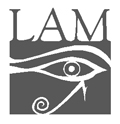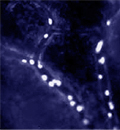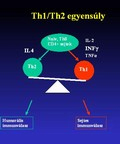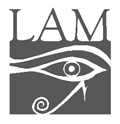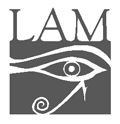The eLitMed.hu medical portal uses computer cookies for convenient operation. Detailed information can be found in the Cookie-policy.
Hungarian Immunology - 2007;6(05)
Content
[The role of endothelial cells]
[The role of endothelial cells is much beyond the well known barrier function between blood and tissues. Several different stimuli converge in the endothelial cells, which in turn regulate a number of vital processes in the organisms. Among these processes one of the most important is the immune response. Endothelial cells modulate the homing of leukocytes by the production of adhesion molecules and cytokines depending on activation state, anatomic location and vessel type. Endothelial cells express MHC and costimulatory molecules, which enables them to present antigens to T cells. Antigen presentation may lead to activation or tolerance of T cells depending on the phenotype of endothelial cells. They also express complement regulatory molecules and produce several complement cascade proteins. Endothelial cells take part in the catabolism of immunoglobulins as well as in the removal of circulating immune complexes. Finally, endothelial cells regulate inflammation at different levels by several mechanisms, which may substantially determinate the progression of the immune response.]
[Examination of leukocyte-endothel interactions in inflammatory animal models]
[Leukocyte influx into tissues is one of the hallmarks of physiological reactions to inflammatory stimuli, which is followed by a multistep process, resulting in leukocyte extravasation from the postcapillary venules. The different kinds of adhesion molecules, that play role in the rolling and firm adhesion of the leukocytes, have been investigated very intensively. By the help of animal models of inflammation, numerous individuals, being in the same stage of the disease, can be examined. The requirement for the adhesion molecules for inflammatory responses could be investigated with antibodies or, nowadays more often, gene knock out (KO) or transgenic mice. Beside evaluating the morphological and cytokine profile differences, using intravital microscopy is of great importance in the inflammatory experiments, while it allows observing interactions of virtually any blood cell types with the endothelial wall in vivo. The results are sometimes conflicting, indicating that the process of leukocyte-endothel interactions depends on different kind of other factors than the adhesion molecules, and still not fully understood.]
[Altered rate and absolute count of Th1/Th2 and Tc1/Tc2 lymphocytes in whole blood of patients with psoriasis]
[BACKGROUND - Psoriasis is a chronic inflammatory skin disorder characterised by an altered rate of interferon (IFN)-γ and interleukin (IL)-4 producing lesional and peripheral blood CD4+ and CD8+ T cells. To further characterise the imbalance of these cells and cytokines the rate and as a novel approach the absolute cell count (ACC) of IFN-γ+, IL-4+ and IL-10+ Thelper and Tcytotoxic cells was determined in the peripheral blood of psoriatic individuals. MATERIALS AND METHODS - Cell-associated cytokine expression was determined using intracellular cytokine staining and flow cytometry, serum cytokine levels were measured by enzyme linked immunosorbent assays (ELISAs) in the samples of 35 psoriatic patients and 15 controls. RESULTS - Significantly elevated rate (p<0.008) and ACC (p<0.009) of CD4+/IFN-γ+ cells was observed in the patients (28.3±8.8% and 237,216±134,154 cells/ml) compared to the healthy controls (21.0+ 6.8% and 135,772±50,212 cells/ml). In contrast the rate and the ACC of CD4+/IL-4+ cells decreased significantly in psoriasis (0.45±0.67% vs. 1.01± 0.48%, p<0.0001; 3,229±3,724 vs. 5,117±4,171 cells/ml, p<0.05). In the case of CD8+ T cells only the rate and the ACC of CD8+/IL-10+ cells increased significantly in patients compared to controls (5.49±5.42% vs. 1.59±0.78%, p<0.003 and 19,799±17,412 vs. 5,564±2,794 cells/ml, p<0.03). Though higher IFN-γ and lower IL-4 and IL-10 serum concentrations were detected in psoriasis these differences between patients and controls were not significant. Comparing the different cytokine parameters the serum cytokine levels showed some correlation only with the ACC and not with the rate of cytokine positive cells. CONCLUSIONS - These results further prove the presence of an altered balance in cytokine regulation towards the Thelper 1 cytokines in psoriasis, besides indicate that application of the ACC of cytokine positive helper and cytotoxic T cells as a novel parameter can help in the characterisation of these changes in different disorders.]
[Alpha calcidol treatment in patients with psoriatic arthropathy: clinical and immunological effects]
[OBJECTIVE - Our objective was to describe the functional changes of the immune system also to evaluate the clinical parameters during systemic alphacalcidol (1αOH vitamin D3) treatment in patients with psoriatic arthropathy. PATIENTS AND METHOD - Nineteen patients with peripheral polyarticular form of psoriatic arthropathy were investigated. Ten patients were treated with daily 2×25 mcg alphacalcidol per os for 6 months and the other 9 patients served as controls. Three visits (at start, 3 and 6 months later) were carried out during the study, changes in the laboratory and clinical parameters were examined and analysed statistically in the treated and control groups. RESULTS - In the peripheral blood of the treated group a statistically significant decrease in the percentage of CD3/CD69 positive activated and CD8 positive IFNγ producing T cells was observed and the serum level of IFNγ also showed a significant decrease during the first 3 months. Another three months later no change in the above mentioned variables could be detected. Additionally, there was a significant decrease in the clinical activity of the disease using DAS28 score during the whole 6 months follow up period. In the control group no significant changes were observed. CONCLUSION - Our results show that systemic alphacalcidol treatment has a notable immune modulatory effect on patients with psoriatic arthropathy. This effect is manifested in short-term temporary decrease of type 1 immune responses and continuous decrease in the disease activity.]
1.
Clinical Neuroscience
[Headache registry in Szeged: Experiences regarding to migraine patients]2.
Clinical Neuroscience
[The new target population of stroke awareness campaign: Kindergarten students ]3.
Clinical Neuroscience
Is there any difference in mortality rates of atrial fibrillation detected before or after ischemic stroke?4.
Clinical Neuroscience
Factors influencing the level of stigma in Parkinson’s disease in western Turkey5.
Clinical Neuroscience
[The effects of demographic and clinical factors on the severity of poststroke aphasia]1.
2.
3.
4.
5.
